Bloodshed in Taxco: The Holy Thursday that shocked Mexico
EL PAÍS reconstructs the murder of a girl and the lynching of the alleged culprit in the state of Guerrero, where furious residents have taken justice into their own hands against the backdrop of organized crime
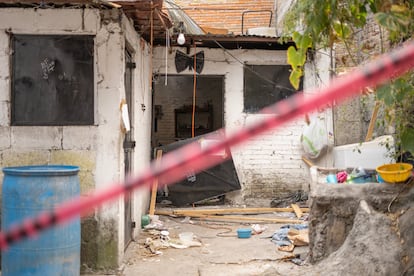

During Holy Week, all the demons were unleashed in Taxco, one of the most beautiful towns in Mexico. It’s a white hamlet perched on a hill, with steep stone streets, ornate churches and steep alleys that exhaust the local children. On Wednesday, March 27, while on vacation during the religious holiday, an eight-year-old girl named Camila walked up one of those alleys, so that she could go over to a friend’s house and play with her in the inflatable pool. It wasn’t the first time that she made this short trip, but it was the last time she was seen alive, in an image recorded on a security camera that a resident installed after an attempted robbery some time ago.
Before the body was found a few miles from the town, dozens of Taxqueños gathered in front of a house for hours, waiting for the police to arrest the alleged culprits: a woman and two of her children. However, the mob ended up raiding the house and dragging the detainees down the alley. The woman, Ana Rosa, was beaten to death, while her two boys were left badly injured, due to inaction on the part of the officers. Death and revenge were covered by dozens of journalists, who had originally come to cover the town’s famous Holy Week. In the end, they encountered real-life bloodshed.
According to the autopsy, there was no swimming pool in the house where Camila died from asphyxiation. At the top of the narrow alley — which ends after climbing more than 50 steps and several ramps —, plastic police tape attempts to block the way to a patio where some plants are lined up. The open door reveals a shabby space of about 200 square feet: a kitchen, a dining room and a bedroom. In the left corner, there’s a bare mattress. A couple of feet away from it, there’s a table strewn with sleeping pills. More pills can be found on the small, uncomfortable sofa. Everything is in motionless disorder in the hut, with its earthen floor and tin roof. A washing machine sits on the patio, near the only toilet.
“How could there be a pool, if there isn’t even a proper floor?” a neighbor points out from across the street. She lives just six or seven feet away from the rocky hallway that belonged to the woman who was lynched. Her grandson has played in the house, with Camila and one of Ana Rosa’s daughters. Apparently, it was Ana Rosa who asked Camila to come over and swim in the inflatable pool on the afternoon of March 27th.
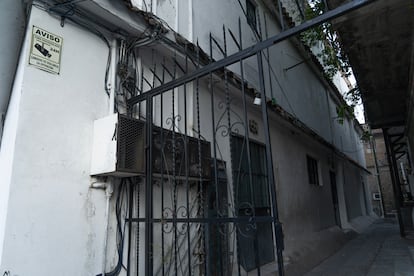
The limited information provided by the police has given way to statements from local residents and family members of the victim. It’s known that, shortly after the girl disappeared, a ransom request for 250,000 pesos — or about $15,000 — arrived on her mother’s cell phone. “The murderer” — as the neighbors now call Ana Rosa — claimed that Camila had never responded to her invitation. But it’s clear that she didn’t count on the private security cameras in the alleyway, which captured Camila’s image. Nor did she count on the cameras belonging to the building down the road, where the alleged culprit and a taxi driver — known in town by the name José — are recorded putting a package wrapped in a black bag and some clothes in the trunk of a car. José has been detained: some residents say that he was Ana Rosa’s boyfriend. “What nonsense, she was with a [bus driver]. The cabby wasn’t her partner,” the next-door neighbor tells EL PAÍS.
This is a story that involves taxi drivers, considered to be a professional group that is heavily linked to organized crime in the state of Guerrero, a turbulent and violent southwestern Mexican state, where the town of Taxco is located. “You hear gunshots on most nights,” another neighbor notes. However, for a few days in the area there’s been relative calm, given the presence of a couple of state police officers who are protecting Camila’s mother, Margarita. They’re posted outside the door of the deceased girl’s house. And, down the road, a couple of other uniformed men guard the area, day and night.
Why so much protection for the victims? Well, the husband of the lynched woman — a taxi driver — was killed some time ago. Her two sons — now beaten and detained — are also taxi drivers. And the man who came to pick up the little girl’s body is also of the same profession. The residents of Garden Street pronounce the classic words of those who don’t want to say too much — words that are often heard throughout Mexico: “They were on the wrong path.”
From time to time, Guerrero’s capital, Chilpancigo, is torn apart by torched taxis and buses, as armed groups scramble for their share of the pie. Taxi drivers are easy prey for organized crime. They are extorted into serving the cartels. In taxis, you can transport illegal merchandise easily: the drivers go all over the place, they know the roads, and they know where everyone lives. And woe to those who don’t. Recent images shocked Mexico when hitmen beat taxi drivers in Acapulco, because they hadn’t given them the information they demanded.
Ana Rosa — the lynched woman — often used to ask fellow residents: “So, you have a kid in the United States? Do you send them money?” A shopkeeper tells EL PAÍS that she used to respond to all her questions, without understanding the intention behind them. And it turns out that Camila’s mother also has a husband in the United States (according to some versions, he’s her ex-husband). Nobody in town knows if he attended his daughter’s funeral.
Acapulco, like Taxco, is a very touristy city. And crime is no longer limited to drugs: any business that makes money becomes involved. Tourism is another goose that lays golden eggs.
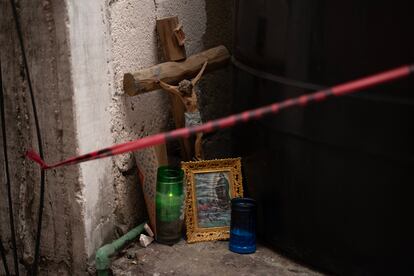
Between the night of Wednesday and the afternoon of Holy Thursday, just hours before the religious processions began through the streets, tension broke out in front of Ana Rosa’s house. A question lingered as curious locals — and half of the country — watched the outcome of the crime, which is now (according to protocol) being investigated as a case of femicide.
Why didn’t the police remove the suspects from the house? Long hours passed with the crowd gathered, until chaos broke out. Residents knocked down the doors and dragged out the woman and her two sons, who — supposedly — had arrived in their taxis while the events were unfolding. No one knows if the little girl and the older girl — about 14-years-old — were in the house at the time. But they weren’t seen. Later on, “the oldest came out and hugged her boyfriend, crying: ‘My mom, my mom,’” says the neighbor, who, more than two weeks later, still carries fear in her body. At the time, the police didn’t let anybody in the vicinity leave their house. Everyone barricaded themselves in, with the curtains drawn.
Ana Rosa was dragged down the alley and to the road, where dozens of shouting people crowded around her. Journalists recorded the bloody afternoon via drones. Surely there has never been such a detailed record of a lynching. The case regarding the illegality of the mob’s violence has been resolved, without even knowing whether or not the woman is guilty. The corpse looks like an abused puppet, destroyed with a fury that dwarfed the Holy Week processions, when the faithful of Taxco carry bundles of thorns as penance.
In the video, Ana Rosa is in the hands of men and women, who vent at her with rage. “Kill the bitch, break her ribs. In her face, in her face,” they shout, inciting those who kick her. “It’s less than you deserve... You don’t touch girls,” voices are heard in chorus — as if it were an ordinary demonstration — while they end the life of a woman, who is denied the right to respond. It’s of no use for Ana Rosa to cling to the legs of a police officer, who remains aloof.
The agents eventually manage to lift her into the back of a patrol vehicle, as well as one of her children, whose face is bloodied. But the crowd doesn’t stop. They keep beating the woman: they pull her black hair, they tear off her shirt, they kick her head, and they manage to get her out of the van to continue the assault. The journalists — breathing heavily — report all of this live, without believing what they’re seeing. They don’t understand why the patrol doesn’t start the engine and take off with the wounded, instead of letting the locals get their hands on her. A new group of officers from the National Guard removes the boys from the tumult: one is already in prison, while the other — only 17-years-old — is confined to a juvenile detention center, awaiting a judicial process. Their mother, however, suffers a different fate. Practically dead, she’s put back into the police van, which, instead of rushing her to the hospital, deposits her in the Prosecutor’s Office. She has to be carried in, with her head lifeless, hair falling to the ground.
The statements made by the mayor of Taxco, Mario Figueroa Mundo, and the secretary in charge of security in this town of just over 105,000 inhabitants, Doroteo Eugenio Vázquez, have just put the icing on the cake of stupefaction. Why didn’t they take the woman to the hospital? “They didn’t know the seriousness [of her injuries]; the police don’t have medical knowledge. What we intended was to protect her at the Prosecutor’s Office. If she had been taken to the hospital, the mob would have gone there and we would have had no way to protect her,” the mayor claimed. The local authorities hid behind the town’s poor policing capacity, which, according to them, wasn’t supported by higher powers. Hence the delay in removing the suspects and putting them in custody, as well as the inaction of the agents before the crazed mob. Officers didn’t fire a single shot in the air throughout the lynching, even though the police in Mexico tend to be quick to fire. If the suspect could have offered testimony about who exactly was behind the kidnapping and death of the girl, we’ll never know. Her mouth has been permanently sealed.
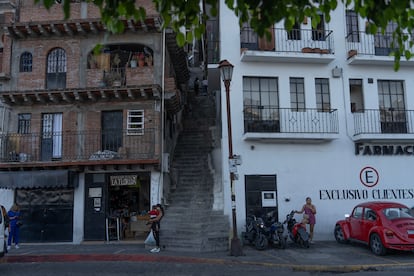
To complete the chaos, Chief of Police Doroteo Eugenio Vázquez was missing throughout the incident. He ultimately blamed the dead girl’s mother for not having adequately protected her daughter. “There was a maternal responsibility and there’s an omission, because if, as a father, I have a child, I must monitor them, guide them, orient them. In this case, the lady supposedly let the girl out of her sight without taking the pertinent security measures,” he declared to the media. Six long days later, he resigned from his position.
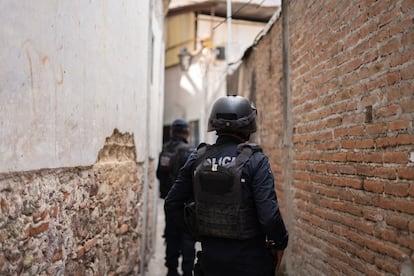
Mexico is a country long-accustomed to lynchings. Years ago, they were limited to rural areas and were attributed to ancestral rites that time hasn’t been able to dispel, or to the population’s fatigue with justice that never arrives. Oftentimes, groundless gossip turns into revenge against strangers; anger at misery and institutional abandonment is unleashed. But lynchings aren’t just relegated to the countryside anymore. Experts maintain that the prevalence of organized crime has also brought lynchings to urban areas of Mexico, which are similarly affected by enormous pockets of hardship.
“We now have evidence that many cases have been orchestrated or promoted by organized crime. They’re not isolated incidents — there’s a direct responsibility [on the part] of these criminals,” affirmed Tadeo Luna, a criminologist and student of this social phenomenon at the Ibero-American University of Puebla, in a 2023 interview with EL PAÍS. In the case of Camila, both circumstances could have occurred: the fury of the inhabitants, angered by the death of the little girl, asking for justice and taking matters into their own hands, or maybe organized crime had a role in a town that, in recent months, has experienced terrible violence. At times, transportation has been halted — schools and businesses have been shuttered. The mayor’s car was even shot up. Once known as the city of silver, Taxco is losing its shine because of armed groups.
Today, the criminologist from Puebla says that perhaps the police showed inaction because they feared the angry crowd. He also suggests that “in many cases, [the officers] don’t know how to [handle the situation], because there are very few states that have an action protocol for cases of lynching,” he adds. But his underlying thesis is that “lynching is functional for the state, in the sense that it diverts violence in a different direction. It allows for people to take justice into their own hands. The authorities are more comfortable with this, rather than with people organizing together to demand security, justice and speed in investigations.”
With this logic, he continues: “If the authorities act, it places them at the center of violence. And that’s not convenient for them.” Case closed. And perhaps criminal groups also prefer the alleged culprits to be dead, rather than for them to make statements to the police. In any case, in Taxco, the authorities have promised the typical investigation and fight against impunity.
Between Flower Street and Garden Street, there’s a distance of barely 300 feet. Young Camila took this route one afternoon, never to return. Her body is already buried, and the residents added another, as part of a recurring phenomenon of lynchings. This second killing has dismayed the little girl’s mother — and not only because she was a friend and neighbor of Ana Rosa. “I wanted her kept alive, so that she could suffer for the same amount of time that I’m going to suffer, rotting in prison for what she did.”

Translated by Avik Jain Chatlani.
Sign up for our weekly newsletter to get more English-language news coverage from EL PAÍS USA Edition
Tu suscripción se está usando en otro dispositivo
¿Quieres añadir otro usuario a tu suscripción?
Si continúas leyendo en este dispositivo, no se podrá leer en el otro.
FlechaTu suscripción se está usando en otro dispositivo y solo puedes acceder a EL PAÍS desde un dispositivo a la vez.
Si quieres compartir tu cuenta, cambia tu suscripción a la modalidad Premium, así podrás añadir otro usuario. Cada uno accederá con su propia cuenta de email, lo que os permitirá personalizar vuestra experiencia en EL PAÍS.
¿Tienes una suscripción de empresa? Accede aquí para contratar más cuentas.
En el caso de no saber quién está usando tu cuenta, te recomendamos cambiar tu contraseña aquí.
Si decides continuar compartiendo tu cuenta, este mensaje se mostrará en tu dispositivo y en el de la otra persona que está usando tu cuenta de forma indefinida, afectando a tu experiencia de lectura. Puedes consultar aquí los términos y condiciones de la suscripción digital.
More information
Archived In
Últimas noticias
Mexico seeks to shore up its defenses following US incursion in Venezuela
Hope gives way to uncertainty among Venezuelan exiles in the US after Maduro’s capture
Cubans look to Venezuela fearfully after Trump’s incursion: ‘We could be next’
The operation in Venezuela to capture Maduro threatens to widen the cracks in the MAGA movement
Most viewed
- Alain Aspect, Nobel laureate in physics: ‘Einstein was so smart that he would have had to recognize quantum entanglement’
- Alvin Hellerstein, a 92-year-old judge appointed by Bill Clinton, to preside over Maduro’s trial in New York
- Gilles Lipovetsky: ‘If you want to live better and fall in love, take Prozac, don’t look to philosophy’
- Cuba confirms death of 32 of its citizens in the US attack against Venezuela
- Why oil has been at the center of Venezuela-US conflicts for decades










































